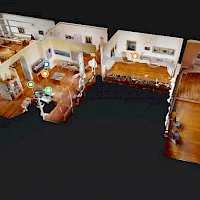The Military History Museum of the Bundeswehr in Dresden is one of the most important history museums in Europe. The focus of the exhibitions is on people and the question of the causes and consequences of war and violence. It sees itself as a forum for the discourse on the role of war and the military in the past, present and future.
The core tasks of the museum include collecting, preserving, researching and exhibiting historical objects relating to German and international military history. The MHM in Dresden presents an extensive permanent exhibition as well as various special exhibitions, which are accompanied by in-depth publications. In addition, the MHM offers a diverse public cultural program as well as extensive educational offers for civil and military visitors.
architecture
The architecture of the American architect Daniel Libeskind is both the museum's first and largest exhibit. The new building cuts through the historic main arsenal in Dresden's Albertstadt like a wedge. The new building becomes an instrument of violence that cuts the old building in half, it becomes a sting, a symbol of war and pain. To the counterpoint of the arsenal, which does not recognize war but questions it.
The symbolic references to the destruction and reconstruction of Dresden are evident: The tip of the wedge is aimed at the dropping point of the first marker bombs, its area corresponds to the outline of the destroyed and largely restored area in the Dresden city area.
(Source: Military History Museum of the Bundeswehr)












